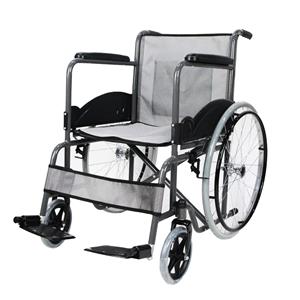Are adult walkers with wheels safe?
As the aging population grows, the issue of elderly mobility safety has increasingly become a societal concern. Walker with wheel, as an assistive walking tool, have become an indispensable part of the daily lives of many seniors. However, the safety of these devices, especially 2 wheel walker, front wheel walker, and folding walker with wheels, has always been a matter of debate. This article will delve into the safety of these "walkers with wheels," analyzing their advantages and potential risks, as well as how to ensure the safety of users.

I. Popularity and Types of Walker with Wheel
Walker with wheel is widely used globally as assistive walking devices. They come in various types, from simple 2 wheel walker to more advanced front wheel walker, and to the portable folding walker with wheels, each designed for specific use cases and target user groups.
1.Two-Wheel Walkers (2 Wheel Walker)
Two-wheel walkers (2 Wheel Walker) are the most common type, usually equipped with two large wheels that provide stability for users while walking. This type of walker with wheel is suitable for both indoor and outdoor flat surfaces, but due to their smaller wheels, they might be less stable on uneven ground.
2.Front-Wheel Walkers (Front Wheel Walker)
Front-wheel walkers (Front Wheel Walker) are more advanced in design, typically featuring two small wheels at the front and two footpads at the back. This design allows front wheel walker to maintain better stability on uneven ground and easier maneuverability in tight spaces.
3. Folding Walkers with Wheels (Folding Walker with Wheels)
Folding walkers with wheels (Folding Walker with Wheels) are designed for users who need to carry or store their walkers frequently. The folding walker with wheels can be easily folded for convenient storage and portability, especially suitable for travel or space-saving needs.

II. Safety Analysis of Walker with Wheel
Despite the convenience walker with wheel provide for the elderly, their safety remains an issue that cannot be overlooked. Here is a detailed analysis of the safety of walker with wheel.
1. Design and Material
The design and material of walker with wheel have a direct impact on their safety. High-quality materials ensure the durability and stability of the device, while a reasonable design reduces the risk of users falling. For example, Walker with wheel is equipped with adjustable handles to accommodate users of different heights, reducing the risk of falls due to improper handle height.
2. Friction between Wheels and Ground
The friction between the wheels and the ground is another important factor affecting the safety of walker with wheel. On smooth surfaces, wheels may slip, increasing the risk of falls. Therefore, choosing a "walker with wheel" suitable for various surfaces is crucial.
3. User's Operation Skills
The user's operation skills also affect the safety of walker with wheel. Some users may lack proper guidance on how to use walker with wheel correctly, leading to improper operation and increased risk of falls. Therefore, providing detailed instructions and training is essential for ensuring user safety.
III. Advantages and Risks of Walker with Wheel
When assessing the safety of walker with wheel, we must not overlook the convenience they provide to users and the potential risks.
1.Advantages
· Improved Walking Stability: Walker with wheel provide additional support for users with limited mobility, enhancing their walking stability.
· Increased Mobility: Users of walker with wheel can move more easily at home or outdoors, increasing their range of motion.
· Enhanced Quality of Life: Walker with wheel can help users maintain independence and improve their quality of life.
2.Risks
· Risk of Falling: If the design of walker with wheel is improper or users operate them incorrectly, it may increase the risk of falling.
IV. How to Ensure the Safety of Walker with Wheel
To ensure the safety of walker with wheel, here are some practical suggestions.
1. Choose the Right Walker with Wheel
Users should choose the appropriate "walker with wheel" based on their physical condition and activity needs. For example, front wheel walker may be a better choice for users who need to walk on uneven ground.
2. Regular Inspection and Maintenance
Regularly inspect all parts of the walker with wheel to ensure they are in good working condition. This includes checking the wheels, handles, footpads, and ensuring all screws and connections are tightened.
3.Usage Training
Users should receive proper usage training to learn how to operate walker with wheel correctly. This includes understanding how to stand, walk, turn, and sit correctly.
4. Environmental Adaptability
Users should ensure that the environment in which they use walker with wheel is safe, including clearing obstacles from the ground, ensuring the ground is dry, and avoiding use on slippery surfaces.
5. Personal Protection
Users should wear appropriate personal protective equipment when using walker with wheel, such as non-slip shoes, to reduce the risk of falling.
conclusion
Walker with wheel, especially two-wheel walkers (2 wheel walker), front-wheel walkers (front wheel walker), and folding walkers with wheels (folding walker with wheels), provide great convenience for the elderly, but their safety remains a concern that needs attention. By choosing the right equipment, regular inspection and maintenance, proper usage training, environmental adaptability, and personal protection, we can maximize the safety of these "walkers with wheels," allowing the elderly to walk safely and confidently.




